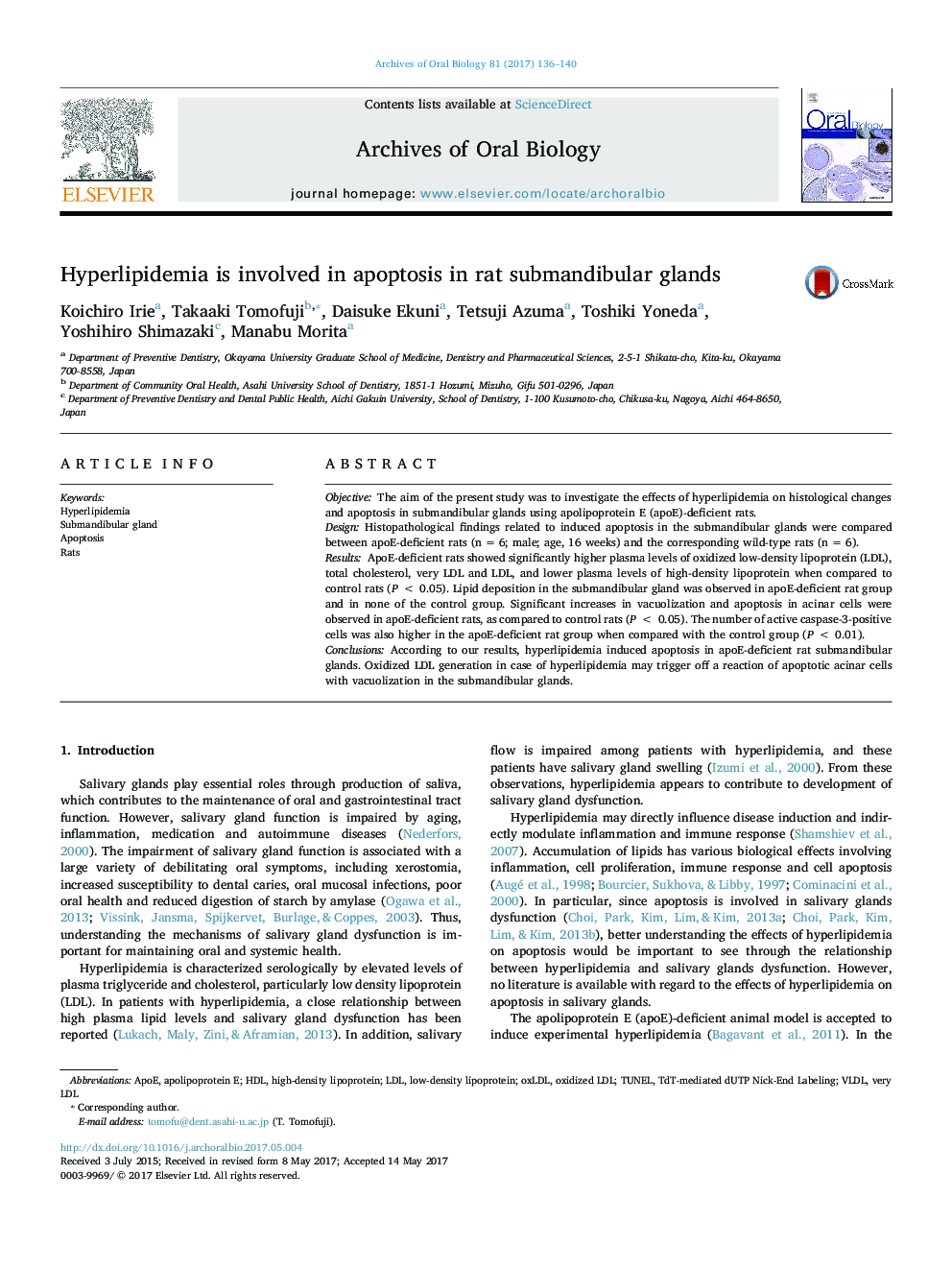| Article ID | Journal | Published Year | Pages | File Type |
|---|---|---|---|---|
| 5637970 | Archives of Oral Biology | 2017 | 5 Pages |
â¢Plasma level of oxLDL was higher in hyperlipidemic rats than in control rats.â¢Structural changes in submandibular glands were found in hyperlipidemic rats.â¢OxLDL may trigger off a reaction of apoptosis in the submandibular glands.
ObjectiveThe aim of the present study was to investigate the effects of hyperlipidemia on histological changes and apoptosis in submandibular glands using apolipoprotein E (apoE)-deficient rats.DesignHistopathological findings related to induced apoptosis in the submandibular glands were compared between apoE-deficient rats (n = 6; male; age, 16 weeks) and the corresponding wild-type rats (n = 6).ResultsApoE-deficient rats showed significantly higher plasma levels of oxidized low-density lipoprotein (LDL), total cholesterol, very LDL and LDL, and lower plasma levels of high-density lipoprotein when compared to control rats (P < 0.05). Lipid deposition in the submandibular gland was observed in apoE-deficient rat group and in none of the control group. Significant increases in vacuolization and apoptosis in acinar cells were observed in apoE-deficient rats, as compared to control rats (P < 0.05). The number of active caspase-3-positive cells was also higher in the apoE-deficient rat group when compared with the control group (P < 0.01).ConclusionsAccording to our results, hyperlipidemia induced apoptosis in apoE-deficient rat submandibular glands. Oxidized LDL generation in case of hyperlipidemia may trigger off a reaction of apoptotic acinar cells with vacuolization in the submandibular glands.
